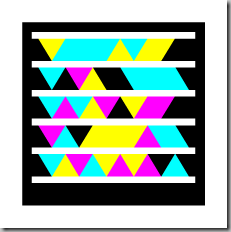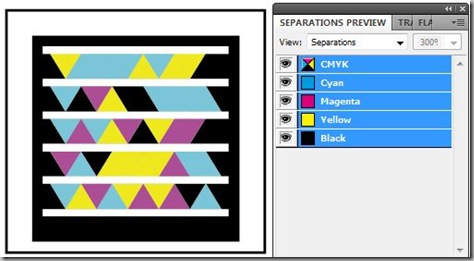Printing Microsoft Tags
Yesterday, Microsoft released a new piece of technology in beta: Microsoft Tag. When you start seeing strangely coloured boxes such as the following around the place: it is time to get the mobile client (yes, iPhone included)
2D barcodes are not new; and nor is there one single standard for all applications. As scanning (optical to digital interpretation) is never 100% guarranteed, there is inbuilt error correction and design elements that make certain 2D formats useful in different situations.
For instance, PDF417, a standard for 2D barcodes, is useful in manufacturing and logistics scenarios as widgets move by on conveyor belts.
The colour makes this tagging system different. Mobile devices have RGB cameras: why not use this to assist depth of data into another dimension.
Creating Your Own
To create your very own Microsoft Tag; create an account and log in to Microsoft Tag.
There are four types of tags: URLs (to web sites), vCards (contact cards: think business cards), Freetext and Dialer.
The beauty for marketing-types is that the use of a Microsoft Tag can be tracked online. If you are concerned with privacy, I suggest you read the FAQ. No personal data is sent to the service.
Do Microsoft Tags work from a Computer screen?
Yes. A test of a 156px by 156px JPEG (therefore, with colour shift and artefacts) was correctly captured by my Treo Pro Windows Mobile Phone 40cm away from the Dell 22” LCD screen.
Print Output
As a part of the service, Microsoft Tag generates either a PDF, WMF or XPS file. These file formats permit placement in printing applications; or conversion from vector formats to bitmap: such as GIF, JPEG or PNG.
As I have a little history in the print-publishing world, I placed the RGB vector PDF into Adobe InDesign CS4 and conducted a quick test.
The separations preview provides a CMYK breakdown of the elements and a preview based on different print output profiles. I switched the onscreen colour to emulate a colour space that would appear in US Newsprint (ie: a smallish gamut), and tested an on-screen tag capture with my Windows Mobile Phone. (note: my LCD monitor is not 100% calibrated, but OK for a quick test!). The software recognised the tag, and worked correctly.
Outdoor Marketing Uses
Imagine Tags printed 1m x 1m high on a billboard. Anyone with a phone can quickly “go to” your marketing information in a measurable way. The users do not need to be square-on to the tag. Way useful.
Go and give it a try.
Another resource:
https://www.istartedsomething.com/20090108/microsoft-tag-microsofts-own-2d-barcode/

